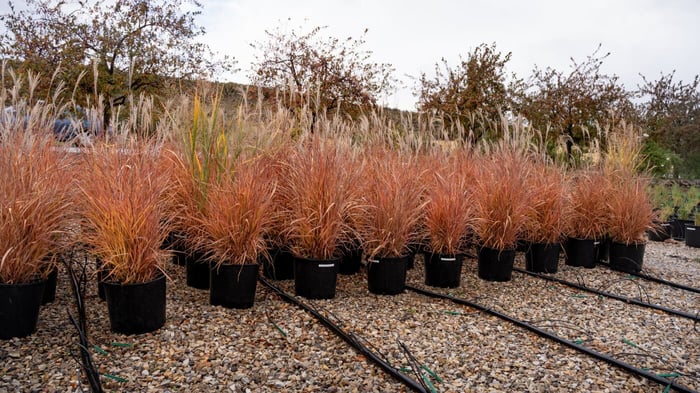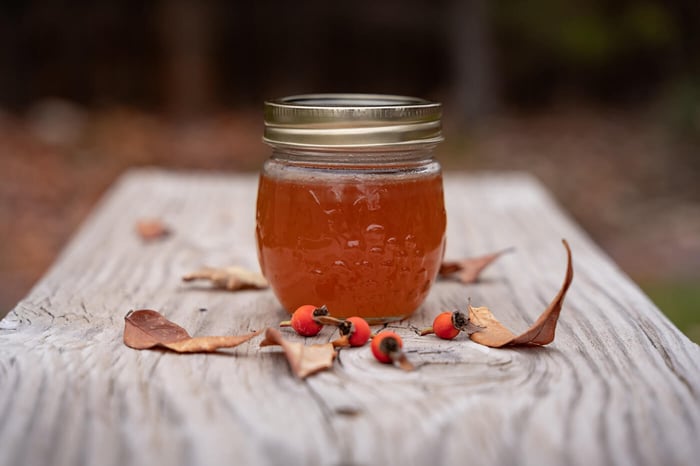Have you ever wanted to create a landscape garden that you could practically plant and forget? It’s not the best practice. It pays to prune and weed as needed, but we understand how busy life can become. Most aspects of our lives are high-maintenance. To counter that, it pays to have a garden that’s low-maintenance. For example, most of the plants that are growing in our landscape are plants that can handle neglect (to a significant degree).
As you might imagine, we spend most of our time attending to our crop plants and customers. Because we’re so busy running a farm and a business, we chose to plant amazing plants in our landscape that practically tend themselves. It’s not hard to see that some of the plants in our landscape need to be pruned and most of our grow beds could use a good weeding, and yet, these gardens are thriving. Why? Because the plants can handle a little neglect.
Neglect is a harsh word. No plant is bulletproof (except for weeds). Every plant worth growing will benefit from a gardener’s shadow. They all have temperature and light requirements, they need water and pruning, and to be rescued from weeds now and then. It’s just that some can handle a little less of that than others. Because we're so busy, we knew we needed that type of plant in our landscape. Let’s take a virtual tour of one of our grow beds so you can get a feel for ways you can create a low-maintenance garden in your yard.
As you head toward the entry walkway from the parking lot, the first plants that greet you are trees. We have a stunning array of trees all around our office. The beautiful, orange, vase-shaped trees are Green Vase Zelkova trees. Their fall color is outstanding and they're easy to grow. If you’d like a similar look with a slightly smaller tree, you could also plant Zileration Zelkova. Clean, dark green summer foliage, symmetrical branching and a dense canopy make ‘Zileration’ a standout among Zelkova cultivars. Both varieties behave similarly with bold orange fall color.
At the base of the trees in our entry garden you'll find Gro-low Sumac. This is a popular plant among landscapers designing gardens near stores, shopping centers, or hospitals because they just grow here without any effort. Because they are often used in a utilitarian manner around less interesting buildings, it’s easy to assume that Gro-Low just isn’t interesting enough for our home landscapes. But we absolutely love it!
It grows in a low, wide, spreading habit that is easy to maintain. Even though it will spread over time, it’s a slower spreader and it won’t overtake your grow bed—at least not without years of advance warning. It grows small, yellow flowers in the spring that attract pollinators, but its greatest feature is its leaves. They grow thick and green in the spring and summer and create a bright red and orange show in the fall. This cultivar is non-poisonous, waterwise, and deer resistant, so it’s a great option in any landscape.

We like to pack our grow beds whenever possible because a thick-growing garden helps reduce water loss in the summer and it helps to crowd out weeds. That’s one reason why we’ve planted this garden in mass. The other reason we plant in mass is to create large patches of color that command your attention.
Planting in mass also reduces the variety of plants you have to think about in a grow bed. You can attend to the needs of four or five varieties of plants, rather than trying to remember dozens of plants and their individual needs at any given time. Variety is essential for a healthy landscape, but you can spread that variety throughout several grow beds.
On the other side of the entry garden, you’ll see a nice, low-growing, Hardy Geranium called Geranium 'Biokovo'. This geranium was selected specifically for its white flowers in spring and its outstanding red foliage in fall. We use this geranium to line the pathway behind the garden. We chose a geranium with white flowers to complement the Iberis, or Candytuft that grows along the other edge of the garden.
Candytuft is one of the earliest bloomers in the spring, producing white flowers for weeks on end. After the blooms have gone, Iberis maintains its nice green foliage throughout summer and fall.
The Feather Reed Grass in our garden looks a lot like Karl Foerster grass, but this one is slightly smaller with a slightly lighter-colored bloom. It also has some light-colored variegation in its leaves. This grass is called Eldorado. You’ll appreciate the way it catches the morning and evening sunlight.
Another fantastic option for an ornamental grass is Miscanthus sinensis 'Purpurascens'. It’s a Maiden grass better known as Flame Grass. We have an entire blog devoted to Flame Grass. It’s absolutely outstanding!
Behind our Eldorado grass, you’ll see a beautiful Weeping Blue Atlas Cedar. We prune this every few years to maintain its size so that it fits nicely in the bed. Next to that cedar, you’ll see a couple of Red Barron Crabapple trees. Red Barron Crabapples bloom profusely in the spring with bold, pink blossoms. They produce red fruit that persists through the winter, offering food for hungry birds, and their foliage is a striking reddish bronze in fall.
Another favorite shrub that we have growing in this little entry garden is Tiny Wine® Ninebark. This beauty is extra bushy with small, refined leaves. Dark bronze-maroon foliage contrasts beautifully with the small pink-white button flowers that appear in late spring. It offers a very showy flower display all up and down its branches. But even if it didn’t bloom, it’s still a fantastic specimen with its dark foliage. If you’re trying to recreate a similar look, you don’t have to use this exact cultivar. Any ninebark would give you something special to appreciate.
We also have a few red KnockOut roses scattered throughout the grow bed. They’re starting to lose their leaves and head into dormancy right now, but they add a fun pop of red throughout much of the growing season. Roses are surprisingly hardy and waterwise. Almost any variety will thrive in Utah's climate, bringing a nice pop of color that lasts through much of the growing season.
So, there you have it. A fairly solid rundown of the plants we have growing in one of our entry gardens. If you want to create a low-maintenance garden in your own yard, this list of plants will get you started in a fun direction. Of course, you can always contact us with any questions, or meet with one of our designers for a personal consultation. But we wanted to share this garden with you to remind you that gardening can be fun, and it doesn’t always include wearing yourself out with yard work. The right plants can make all the difference.
Good luck, and happy gardening!















